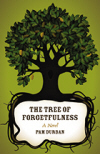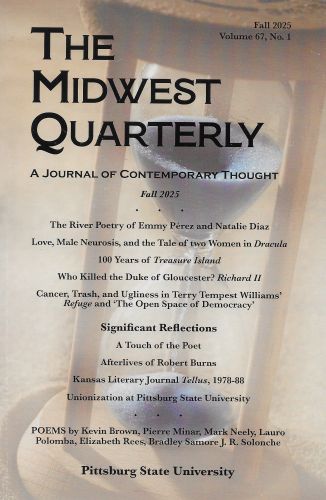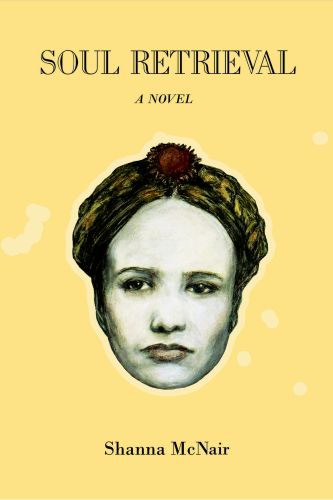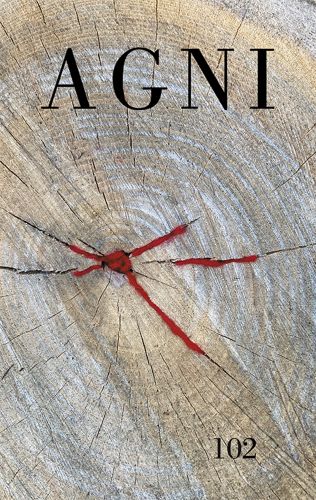The Tree of Forgetfulness, by Pam Durban, is the winner of the Lillian Smith Book Award. The novel is based on the true event of the lynching of three blacks in Aiken, South Carolina—a town in which forty-one lynchings had been investigated in the eight years prior to the one in 1926. The characters, fictional, are few: Howard and Libba Aimar and their son, daughter and unborn grandchild; Minnie and Zeke Settles, the Aimars’ black help; Aubrey Timmerman, the sheriff, who does the law his way; and Curtis N. R. Barrett, the New York reporter sent to find who really committed the murders, the three bodies so shot up and burned, they were a horror to view. The Confederate flag, bootleg whisky, the Klan, as well as good Southern manners and antebellum descendants whose heritage of “how it used to be” are all here, but the book is a series of levels moving downward from community to the individual, propelled by the interior dialogue of the characters, until we come to the real story.
The Tree of Forgetfulness, by Pam Durban, is the winner of the Lillian Smith Book Award. The novel is based on the true event of the lynching of three blacks in Aiken, South Carolina—a town in which forty-one lynchings had been investigated in the eight years prior to the one in 1926. The characters, fictional, are few: Howard and Libba Aimar and their son, daughter and unborn grandchild; Minnie and Zeke Settles, the Aimars’ black help; Aubrey Timmerman, the sheriff, who does the law his way; and Curtis N. R. Barrett, the New York reporter sent to find who really committed the murders, the three bodies so shot up and burned, they were a horror to view. The Confederate flag, bootleg whisky, the Klan, as well as good Southern manners and antebellum descendants whose heritage of “how it used to be” are all here, but the book is a series of levels moving downward from community to the individual, propelled by the interior dialogue of the characters, until we come to the real story.
In the beginning, there is “their-story-for-themselves” about the lynchings. Here is social glue. They are a mass, a crowd, this town. They vouch for one another. They have loyalty and honor, and they keep it in the family, this town. As one black lawyer writes:
When one or two men commit a murder they can as a rule be found and arrested. But when a hundred or more engage in this pastime, it seems impossible to discover a thing about it. . . .
One of the main characters, Howard Aimar, we find through the deathbed accounting of his life that he had lived not for himself, but for others, “Happy to oblige.” He knew the subtleties of knowing what he could and could not say in order to be in the group: “He’d paid, and he was glad to pay; ponying up was part of playing the game square.” And, his “first” story to himself about the lynching, his then unborn grandchild questioned as she sat with him while he was dying:
They were all men of good character, good conscience.
How had they gone to that place and stood in the dark?
How had that happened to any of them?
He tried to convince her of the story, asking her, “Why dredge up that awful time again?” And she answers: “Because it’s part of the silence that was handed down to me. Like the old gun that went to my brother, like our mother’s china came to me. I’m taking an inventory. I want to know what you left me.”
The blight of racism, maintaining all the attitudes that had imbued slavery . . . the Aimars, seemingly more humane than most, kept the leash tight on their help, Minnie and Zeke Settles. Zeke was told not to wear his hat cocked over his right eye, his style to attract the girls. Minnie was expected to brush Libba’s hair one hundred strokes at bed time, while resenting the forced intimacy. As the reporter Barrett came to realize, and returned to the north tainted:
To believe that it was your God-given right to expect a colored man to step off the sidewalk to let you pass. . . . To gauge whether all this was happening as it was supposed to . . . with an instrument so sensitive you were instantly aware when a word or gesture was missing from the sum . . . of respect you were owed. . . . It didn’t take much of this kind of living to make you greedy for more; it was as hard to give up as any other thing that made you a big man in your own eyes.
The characters representing the opposite moral poles of racism are Howard Aimar and Minnie Settles. Howard does come to be able to answer his unborn grandchild—in one word “what” he was and “what” he did. Minnie found the strength to leave the Aimars, unable to digest their silent complicity with the murders, risking her survival. Upon her death, Zeke remembers his mother:
She liked to go out and sit under the crepe myrtle tree in her yard if it was warm or inside by the fire when it got cold. “And do what?” he’d asked.
“Think my own thoughts.”
Minnie is the deepest root, what it means to live true, to live with dignity, and, by the end of her life, she was comfortable inside her own skin. When she had left, she took nothing that had been given to her by the Aimars, left all the cast-off clothing Libba had given her . . . nor did she take an ounce of sentimentality about the good old days.
Durban has given us a book that fully explores the social cohesion of a dominant group (any dominant group, any time and place), being in that murky world of not doing what you believe to be right and/or fooling yourself: “when what a man mistook what he’d meant to do for what he’d actually done”; “that closing the world out was the only way to make it go on being what you wanted it to be. . . .” Durban’s touch point, driving the story, are “the attitudes” found in the subjective fluidity of each character and how attitudes animate the political power of the dominant group, the powerlessness of the oppressed. It’s about implication and complicity, being an onlooker, a silent witness, of not speaking up, and fear not to conform, as Howard was told: “People are talking.” Here is history we all know taken down to the generic structure of power and executed at the level of a morality play. The real story is Howard confronting himself and knowing the truth without excuses and Minnie showing us what our real freedom is . . . to be comfortable with one’s own self. Both these resolutions are cathartic: how we want it to be—an accounting, a truth. The ending is unexpected, and we are delivered to the next generation.





